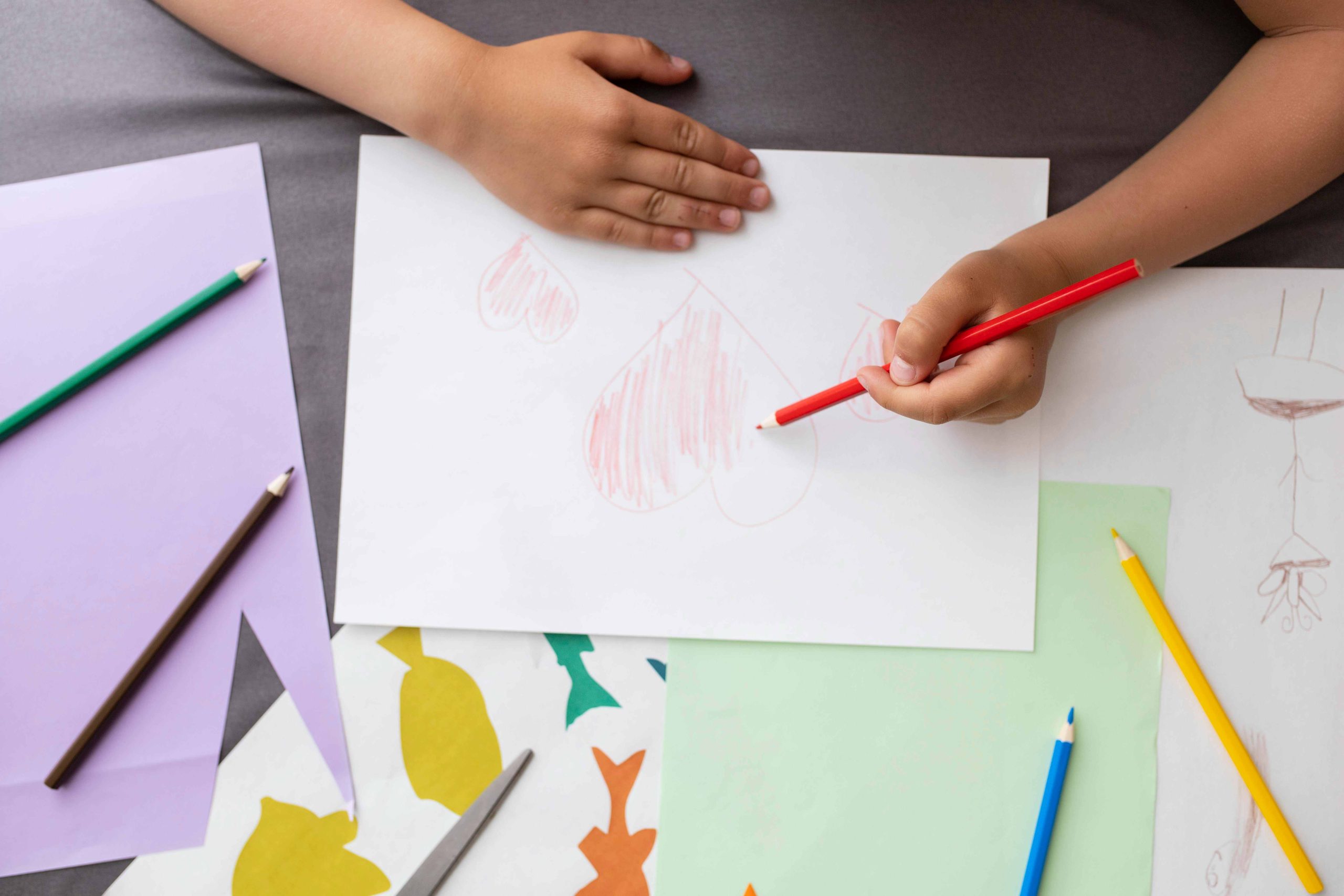
The Importance of Proper Pencil Grip for Preschoolers
Mastering the correct pencil grip is one of the fundamental skills that toddlers need to acquire. It plays a crucial role in facilitating productive writing and overall academic performance. However, many toddlers struggle with incorrect pencil grips, leading to frustration and subpar work. This article will explore the significance of teaching children the proper pencil grip and provide guidance on how to do so effectively.
Understanding Pencil Grip Fundamentals
The way a child holds a pencil while writing or drawing is known as their “pencil grip.” There are three basic types: tripod grip, quadrupod grip, and lateral tripod grip. Among these, the tripod grip is considered the most effective, as it offers the most control and accuracy. In the tripod grip, the child uses their index finger, middle finger, and thumb to hold the pencil, with the pencil resting on the middle finger.
The quadrupod grip involves gripping the pencil with all four fingers, while the lateral tripod grip requires only the thumb and index finger, with the pencil resting on the side of the middle finger.
Effects of Incorrect Pencil Grip
Incorrect pencil grip in preschoolers can have various detrimental effects. Firstly, it may lead to soreness and fatigue in the hand and wrist muscles due to ineffective utilization. Over time, this discomfort can escalate into discomfort and potential injury. Additionally, incorrect pencil grip can result in sloppy handwriting and difficulty forming letters and shapes, causing frustration and a sense of falling behind among preschoolers.
Identifying an Incorrect Pencil Grip
Spotting an incorrect pencil grip in toddlers can be challenging due to their developing fine motor skills and limited muscular control. However, there are some indicators to watch out for. A common sign is gripping the pencil too tightly, leading to cramped or uncomfortable fingers. Another indication is when a child moves the pencil using their wrist instead of their fingers, resulting in poorly formed letters.
Assisting Preschoolers in Developing a Proper Pencil Grip
Fortunately, there are several methods to help children learn the correct pencil grip. One practical approach is to use a pencil grip aid, which can be attached to the pencil to encourage the correct hold. Additionally, preschoolers should be encouraged to engage in daily writing and drawing activities to develop the necessary muscles and improve control.
Creating a supportive and encouraging writing environment is crucial, as children are more likely to maintain a correct grip in a calm and comfortable atmosphere. Moreover, patience and persistence are essential in the learning process, and preschoolers should be praised for their achievements and provided with constructive feedback.
Introducing Fun and Engaging Activities to Promote Correct Pencil Grip
Parents and educators can engage preschoolers in various learning activities to encourage the development of a proper pencil grip. Drawing with chalk outdoors allows children to be creative while practicing their grip. Playing with play dough or clay also helps strengthen hand muscles.
Moreover, encouraging preschoolers to trace shapes and letters using worksheets or a lightbox can improve their grip and hand-eye coordination. By incorporating enjoyable activities into their learning, preschoolers are more likely to remain motivated and interested in developing a proper pencil grip.
The Role of Technology in Promoting Proper Pencil Grip
In today’s digital age, technology can also aid in developing the correct pencil grip. Apps like Dexteria Jr. offer various tasks designed to enhance fine motor skills and promote a proper pencil grip. Additionally, educational games on tablets or computers can improve hand-eye coordination and fine motor skills.
While it’s important to limit screen time for preschoolers, integrating technology into their education can be a valuable tool in supporting their efforts to develop a good pencil grip.
Addressing Common Challenges and Concerns
It’s common for preschoolers to encounter challenges in developing a proper pencil grip, which may lead to resistance or frustration. In such cases, patience, positivity, and support are crucial. Seeking guidance from healthcare providers or occupational therapists can be beneficial for children with difficulties in fine motor skills or developmental concerns.
The Benefits of a Good Pencil Grip
Mastering a proper pencil grip offers numerous benefits for preschoolers, including improved handwriting and the ability to create letters and shapes accurately. This enhances their ability to express themselves through writing and drawing, boosting their confidence and motivation.
Conclusion
Developing a proper pencil grip is essential for preschoolers’ success in writing and overall academic development. By employing appropriate methods, providing support and encouragement, and addressing challenges, parents and educators can help preschoolers develop the necessary skills for academic success.
It’s important to recognize that every child learns at their own pace, and achieving a proper pencil grip is a journey rather than a destination. By fostering a supportive and encouraging environment, preschoolers can develop the skills and confidence needed to excel in school and beyond.
Additionally, as technology continues to play a significant role in education, it’s crucial to teach preschoolers how to use digital tools properly to prevent strain or discomfort.
Ultimately, by prioritizing the development of a proper pencil grip and providing the necessary guidance and support, parents and educators can set preschoolers on the path to success in all aspects of their development.


